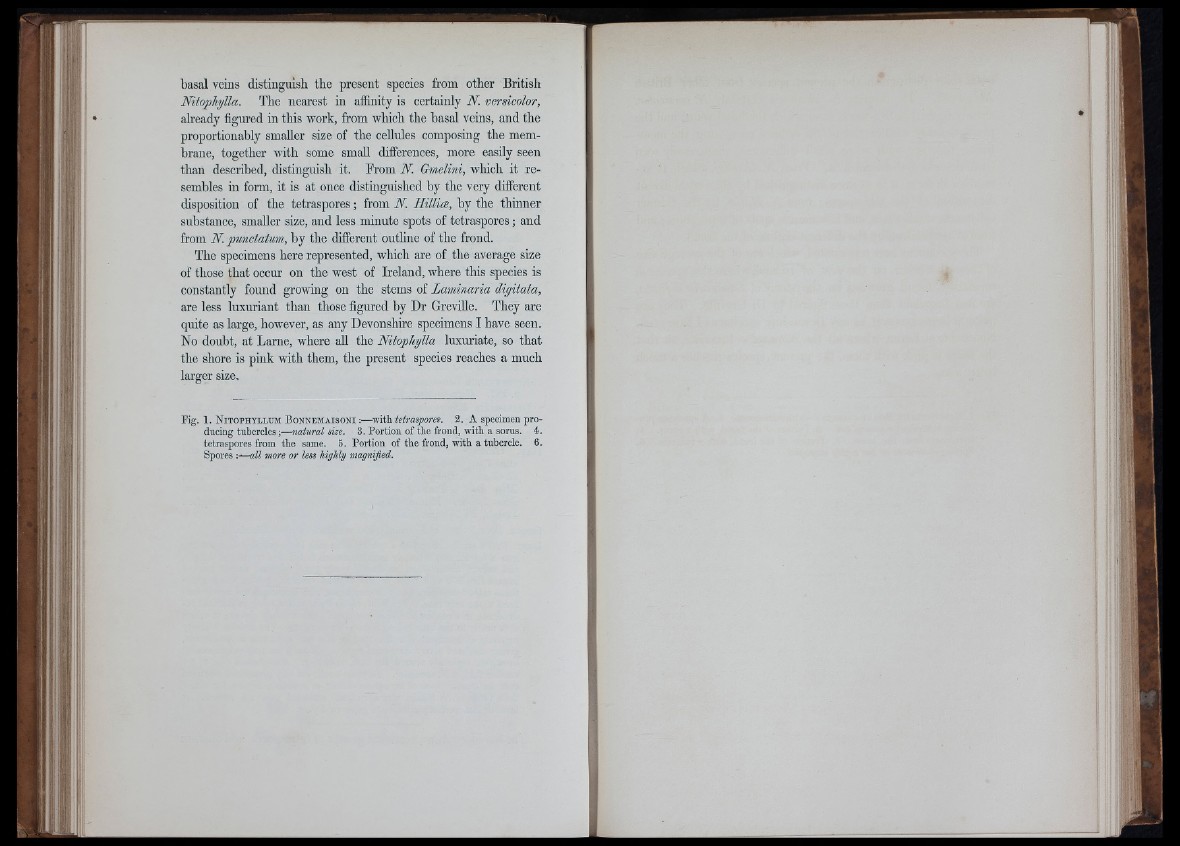
basal veins distinguish the present species from other British
Nitophjlla. The nearest in affinity is certainly N. versicolor,
already figured in this work, from which the hasal veins, and the
proportionably smaller size of the cellules composing the membrane,
together with some small differences, more easily seen
than described, distinguish it. From N. Gmelini, which it resembles
in form, it is at once distinguished by the very different
disposition of the tetraspores ; from N. liilUce, by the thinner
substance, smaller size, and less minute spots of tetraspores ; and
from N. punctatum, by the different outline of the frond.
The specimens here represented, which are of the average size
of those that occur on the west of Ireland, where this species is
constantly found growing on the stems of Laminaria digitata,
are less luxuriant than those figured by Dr Greville. They are
quite as large, however, as any Devonshire specimens I have seen.
No doubt, at Larne, where all the Nitopliylla luxuriate, so that
the shore is pink with them, the present species reaches a much
larger size.
Fig. 1. N it o ph y l lu m B o n n em a is o n i :—^with tetraspores. 3. A specimen producing
tubercles;— natural size, 3. Portion of tbe frond, witb a sorus. 4.
tetraspores from tbe same. 5. Portion of tbe frond, witb a tubercle. 6.
Spores :— all more or less Mi
r ■'I
h< d'p
ii*' >i1 ' iI
!i:
!
. i1i:M11
: 1 1 - ' :i
]• :
i.i
; i